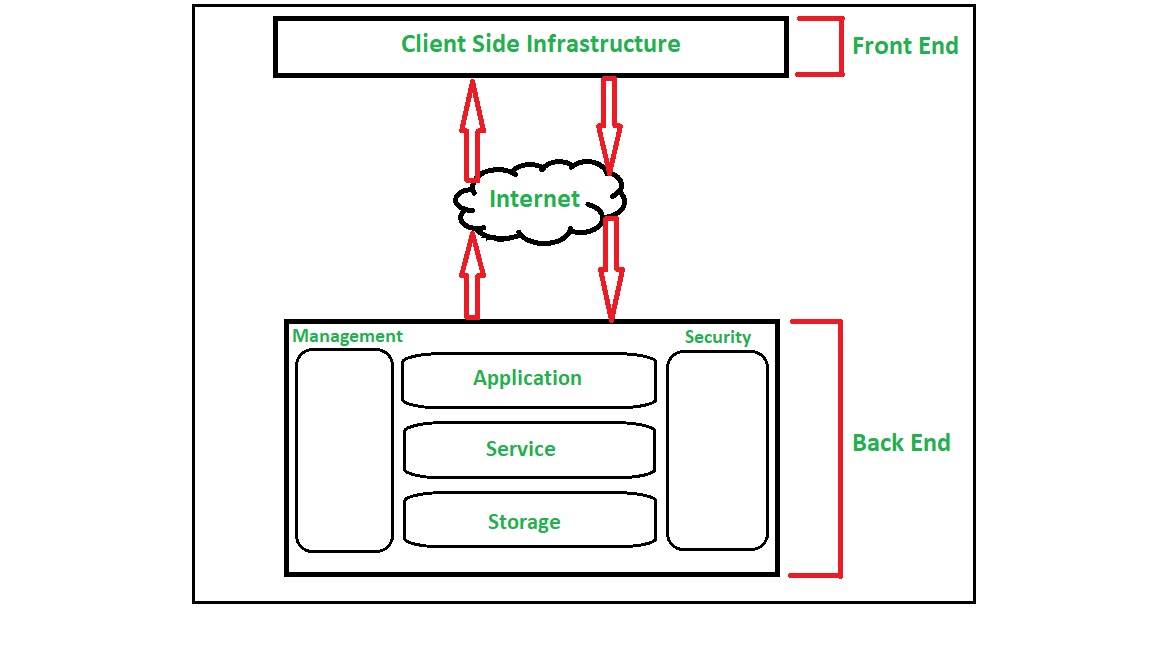Difference between Cloud Computing and Cluster Computing
Last Updated :
27 Jul, 2020
1. Cloud Computing :
Cloud Computing refers to the on demand delivery of the IT resources especially computing power and data storage through the internet with pay per use pricing. It generally refers to the data centers available to the users over internet. Cloud Computing is the virtualized pool of resources. It allows us to create, configure and customize our applications online. The user can access any resource at any time and any where with out worrying about the management and maintenance of actual resources. Cloud computing delivers both a combination of hardware and software based computing resources over network.
The below figure ill90ustrates a simple architecture of Cloud Computing –

2. Cluster Computing :
Cluster computing refers to the process of sharing the computation task to multiple computers of the cluster. The number of computers are connected on a network and they perform a single task by forming a Cluster of computers where the process of computing is called as cluster computing.
Cluster Computing is a high performance computing framework which helps in solving more complex operations more efficiently with a faster processing speed and better data integrity. Cluster Computing is a networking technology that performs its operations based on the principle of distributed systems.
The below figure illustrates a simple architecture of Cluster Computing –

Difference between Cloud Computing and Cluster Computing :
|
Serial Number
|
Category
|
Cloud Computing
|
Cluster Computing
|
| 1. |
Goal |
Providing on demand IT resources and services. |
Performing a complex task in a modular approach. |
| 2. |
Resource Sharing |
Specific assigned resources are not shareable. |
Specific assigned resources are not shareable. |
| 3. |
Resource type |
In cloud computing there is heterogeneous resource type. |
In Cluster Computing there is homogeneous resource type. |
| 4. |
Virtualization |
Virtualization hardware and software resources. |
No virtualization resources. |
| 5. |
Security |
Security through isolation can be achieved. |
Security through node credential can be achieved. |
| 6. |
Initial Cost |
Initial capital cost for setup is very low. |
Initial capital cost for setup is very high. |
| 7. |
Security Requirement |
Very low |
Very high |
| 8. |
Maintenance |
Requires low maintenance. |
Requires little more maintenance. |
| 9. |
Hardware |
No hardware requirement physically. |
More hardware requirement physically. |
| 10. |
Node OS |
Multiple OS runs in VM |
Windows, Linux |
| 11. |
User Management |
User management is centralized or decentralized to vendor/third party. |
User management is centralized. |
| 12. |
Scalability |
Allowed |
Limited |
| 13. |
Architecture |
In Cloud Computing User chosen architecture. |
In Cluster Computing Cluster oriented architecture |
| 14. |
Characteristic |
Dynamic computing infrastructure/resources/services |
Tightly coupled systems/resources |
| 15. |
Software Dependent |
In cloud computing application domain independent software. |
In cluster computing application domain dependent software. |
| 16. |
Example |
Dropbox, Gmail |
Sony PlayStation clusters |
Share your thoughts in the comments
Please Login to comment...